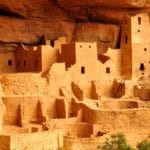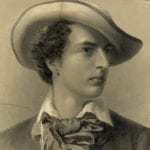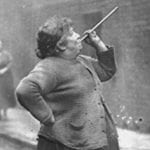 Politics
Politics  Politics
Politics  Humans
Humans The 20th Century’s 10 Most Famous Centenarians
 History
History 10 Influencers Who Lived Centuries before Social Media
 Miscellaneous
Miscellaneous 10 Ancient Etiquette Rules You Never Knew Existed
 Our World
Our World Planet Earth’s 10 Most Hardcore Natural Creations
 Movies and TV
Movies and TV 10 Times Twin Movies Competed with Each Other
 The Arts
The Arts 10 Masterpieces Plucked from the Artist’s Subconscious
 Crime
Crime 10 Fascinating Facts about Rikers Island
 Pop Culture
Pop Culture 10 Things You Might Not Know about Dracula
 Weird Stuff
Weird Stuff 10 Everyday Activities That Were Once Considered Illegal
 Politics
Politics 10 U.S. Presidents Who Cheated on Their Wives
 Humans
Humans The 20th Century’s 10 Most Famous Centenarians
 History
History 10 Influencers Who Lived Centuries before Social Media
Who's Behind Listverse?

Jamie Frater
Head Editor
Jamie founded Listverse due to an insatiable desire to share fascinating, obscure, and bizarre facts. He has been a guest speaker on numerous national radio and television stations and is a five time published author.
More About Us Miscellaneous
Miscellaneous 10 Ancient Etiquette Rules You Never Knew Existed
 Our World
Our World Planet Earth’s 10 Most Hardcore Natural Creations
 Movies and TV
Movies and TV 10 Times Twin Movies Competed with Each Other
 The Arts
The Arts 10 Masterpieces Plucked from the Artist’s Subconscious
 Crime
Crime 10 Fascinating Facts about Rikers Island
 Pop Culture
Pop Culture 10 Things You Might Not Know about Dracula
 Weird Stuff
Weird Stuff 10 Everyday Activities That Were Once Considered Illegal
10 Expeditions That Mysteriously Disappeared
In our modern age of satellite imagery and aircraft, it is incredibly easy to explore and map out new locations. In the past, though, the job fell to small expeditions of well-equipped people. Relying on nothing but their log, some rations, and a handful of mapping tools, these groups would often spend months, if not years, traversing new frontiers and recording what they found. These voyages were extremely perilous, and many ended in disaster.
A few, though, suffered an even stranger fate: They disappeared from the face of the Earth entirely. Some have since been discovered—often centuries later—but others remain missing. The mysterious disappearance of Percy Fawcett, for example, has led as many as 100 other explorers to their deaths and still hasn’t been solved.[1] Here are ten expeditions that mysteriously disappeared.
10 Madoc
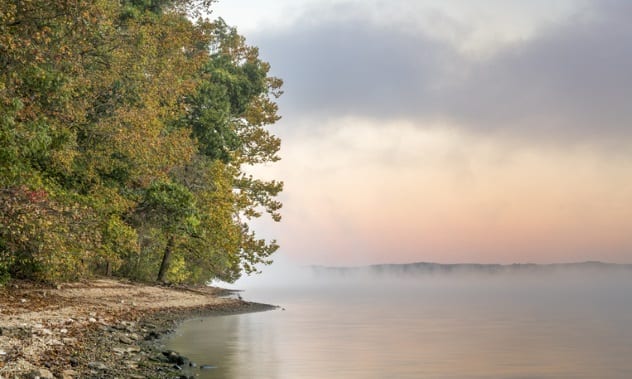
Several centuries before Columbus sailed to the Americas, a Welsh prince named Madoc departed Wales with ten ships and a dream of discovering a new land. Madoc was the son of King Owain Gwynedd, who had 18 other sons, some of them bastards. Madoc was one of the bastards. When King Owain died in 1169, a civil war broke out between the brothers over who should be the next king. Madoc, a peaceful man, assembled a party of other peace-lovers and set out to find new lands. According to the legend, he returned in 1171 with stories of his adventures and attracted more people to go with him on a second expedition, from which he never returned.[2]
The story, which was first recorded in a Welsh manuscript in the 1500s, is shadowy on the details, but some people believe Madoc and his men landed in the vicinity of what is now Mobile, Alabama. In particular, stone forts along the Alabama River have drawn attention since they were built before Columbus’s arrival, but some Cherokee tribes say they were built by “White People.”
Some speculate that Madoc and his followers joined with and were assimilated by the Mandan Native Americans. Several rumors surround this myth, such as the alleged similarity between the Mandan language and Welsh. Governor John Sevier of Tennessee wrote a report in 1799 detailing the discovery of six skeletons encased in brass armor bearing the Welsh coat of arms, which may have been a hoax. If they were real, they would be the most solid evidence we have for the potential fate of Madoc’s expedition, which otherwise remains a mystery.
9 Vivaldi Expedition
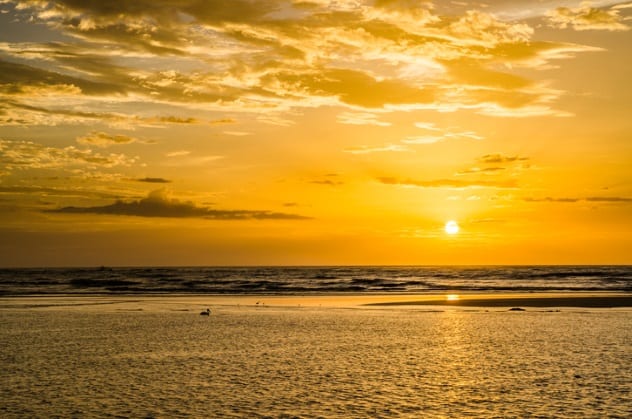
It’s now a well-known fact that Columbus wasn’t searching for America when he left Spain; he was expecting to find Asia. And two centuries earlier, in 1291, that was also the goal of the Vivaldi expedition. Departing from Genoa, the two brothers, Vandino and Ugolino Vivaldi, and their followers hoped to reach India by navigating around the southern tip of Africa. They outfitted their expedition with enough food for ten years of travel, so they clearly expected to be gone for a long time. They passed through the Strait of Gibraltar in mid-1291 and were never seen again.[3]
There were several attempts to discover the fate of the expedition, the first led by Lancelotto Malocello in 1312. He voyaged as far as the Canary Islands, where he built a fort and remained for over two decades without seeing any trace of the lost brothers. Sometime in the early 1300s, Ugolino’s son, Sorleone, went in search of his missing father and uncle. According to some sources, he may have made it as far as Mogadishu, but he, too, found no trace of them.
Another mention of the expedition appears in 1455, when the explorer Antoniotto Uso Di Mare said he’d met a descendant of a survivor who’d traveled with the brothers. According to him, the brothers had made it as far as Senegal, where they were captured and held captive for the rest of their lives.
8 Abubakari Expedition
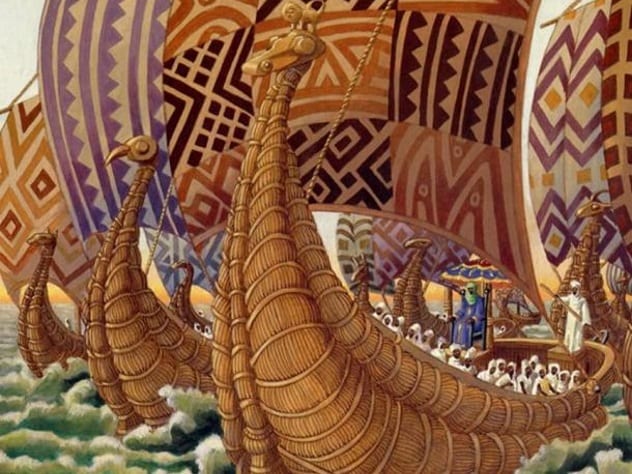
The expedition of Abu Bakr II (also known as Mansa Qu), ruler of the Mali Empire, is surrounded by controversy. The best evidence we have for it comes from the Arab historian Shihab al-Umari, who met with Mansa Musa, Abu Bakr’s heir, in Cairo in the early 1300s.[4]
According to Mansa Musa, his father refused to believe that there was no end to the ocean and outfitted an expedition of 200 ships full of sailors, food, and gold to find its edge. Only one ship returned. According to the ship’s captain, they saw a roaring waterfall in the middle of the ocean which seemed to be the edge. His ship was at the back of the fleet. The rest of the ships were sucked in, and he only escaped by rowing backward. The king refused to believe him and outfitted 3,000 ships to try again, this time traveling with them. He made Mansa Musa regent in his stead but never returned.
Several historians have suggested that Abu Bakr’s expedition reached the Americas, supported by a legend among the native Taino people of Hispaniola of black people who arrived before Columbus with weapons made of an alloy containing gold. Others have dismissed the claims, however, saying that no archaeological evidence of any such connection has ever been found. One thing is certain: Abu Bakr never returned to reclaim his kingdom.
7 Cabot’s Final Expedition

John Cabot is famous today for being the first European to discover North America since the Vikings. Cabot’s history-making voyage most likely landed in Bonavista, Newfoundland, in June 1497. In a manner which loosely resembles the Moon landing, the crew left the ship only briefly to plant the Papal banner and claim the land for England before returning to their ship and spending the next few days exploring the coast from the water. When they returned to England, Cabot was hailed as a hero and received £10 as a reward—the value of about two years’ wages for the average laborer—and a pension of £20 a year.[5]
Despite his fame, the fate of John Cabot remains unknown to this day. We know from contemporary sources that Cabot outfitted a second expedition to the New World, this one made up of five ships. They left Bristol in May 1498 with a cargo mostly comprised of items to trade. The last mention of Cabot and his men came from the Spanish envoy in London two months later, who reported that the fleet was caught in a storm and that one ship had to stop in Ireland. The rest of the fleet went on.
He may have never returned, since no further records of John Cabot survive—not even to say that he was missing. Some speculate that he returned to England and lived there for some years afterward. Research into his final fate is ongoing, but the latter theory is at least supported by the fact that one of the men who was supposed to accompany him on his final voyage, Lancelot Thirkell, was living in London in 1501.
6 Franklin’s Lost Expedition
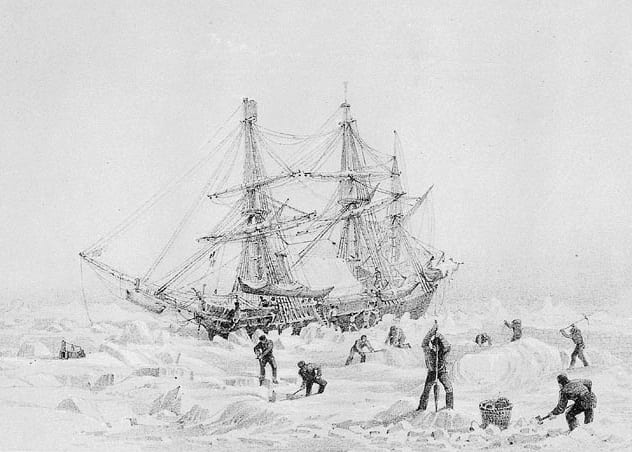
In 1845, the British explorer Sir John Franklin set off with a small team to navigate the last unmapped part of the Northwest Passage. Traveling on the HMS Erebus and the aptly named HMS Terror, they departed England in May. Their fates weren’t known until 2014.[6]
The loss resulted in a flurry of activity in Britain from both the public and the government. The Admiralty organized three search teams in 1848, one by land and two by sea, but they were unsuccessful. Repeated attempts to find them would continue until the final search team was launched with public backing in 1857. (By this time, the government had declared the whole team deceased.) Through conversations with the local Inuits, some of whom had items which had belonged to the crew, they learned that the ships had become trapped in the ice. Franklin himself died in 1847. The remainder of the crew left the ships and, after wintering at King William Island, began a desperate hike back toward civilization on the Canadian mainland, a trek which resulted in the deaths of all involved. According to analysis of some of the bones, it seems the crew resorted to cannibalism.
The truth wasn’t known for sure, though, until Canadian researchers rediscovered the HMS Terror in 2014. The ship was in almost pristine condition—so great, in fact, that it would probably still float if the water was drained from it. The find suggests the ship was abandoned in an orderly manner. The crew most likely relocated to the HMS Erebus, where they made a futile attempt to sail out of the icy water before eventually being trapped again. After that, they were forced to continue on foot.
5 Eudoxus Of Cyzicus
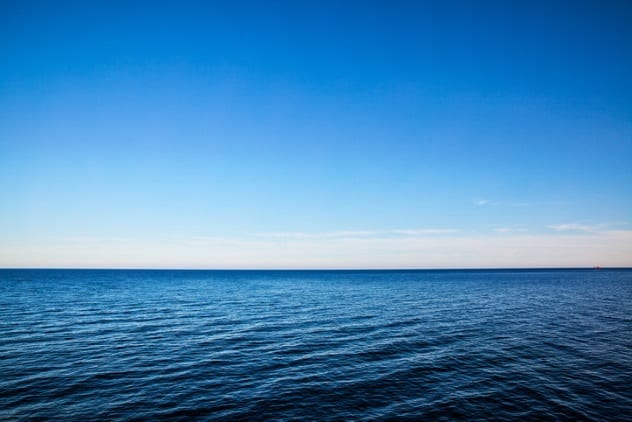
The ancient world was more connected than we often realize. Even before the rise of the Roman Empire, the ancient Greeks were trading with India. While sailors from either country couldn’t make it the whole way, they often met in trade ports along the coast of Yemen, where the Greeks would trade for aromatics and other luxuries to bring back home.
In 118 BC, an Indian sailor was shipwrecked in the Red Sea and brought to the court of Ptolemy, the Greek ruler of Egypt. With the sailor’s help, a Greek explorer, Eudoxus of Cyzicus, made the first recorded voyage to sail directly from Egypt to India.[7] He made the voyage again in 116 BC, this time navigating without Indian help. This was important in the history of trade across the Indian Ocean: Within a few decades, the sea trade between Greece and Rome and ancient India had increased markedly.
During this second voyage, he was blown off course and ended up sailing along the African coast. While there, he encountered a shipwreck which he concluded, based off native stories and the ship’s design, must have come from Spain. He thought it must have journeyed around the southern tip of Africa. Ever the adventurer, he decided to attempt the same journey. After he’d made his way overland to Spain, his first attempt failed after he ran into difficulties along the Morrocan coast and was forced to return. He tried again shortly after and never returned. It was the first recorded attempt to circumnavigate Africa, a feat that wouldn’t be attempted again for over 1,000 years.
4 Peter Tessem And Paul Knutsen

In 1919, Norwegian explorer Roald Amundsen was venturing along the northern coast of Russia as part of an expedition when one of his crewmen, Peter Tessem, began suffering chronic headaches. As a result, he was left on Cape Chelyuskin with another explorer, Paul Knutsen, who’d traveled the area before.[8] Roald was confident that they would make it to the nearby town of Dikson, which was just over a month’s journey away. Paul Knutsen knew the locations of supply caches that had been left in the area, so the two should have been in no danger.
By 1920, however, the two men still hadn’t arrived in Dikson. The Norwegian government organized a search party shortly after but found nothing. The Soviets launched their own search in 1921, which found a Norwegian sled and a letter written by the men stating they were in good health but otherwise found nothing.
By sheer chance, a Soviet research team found the scientific equipment and data that the men had been entrusted with in 1922. Some time later, they found the body of one of the men. While they couldn’t identify it, it was wearing a gold watch engraved with Tessem’s name. The body was found within sight of Dikson. They reburied it further up the slope. Today, the site is marked by a granite monument engraved with Tessem’s name.
3 The Corte-Real Brothers

Gaspar Corte-Real was part of a family of Portuguese explorers: His father had discovered what was most likely North America in 1473, and by the time Gaspar was old enough to sail, he joined his brothers and became an adventurer.
In 1500, the Portuguese king, Manuel, sent Gaspar on an expedition to find the Northwest Passage to Asia. North America was largely unknown territory at the time, and when Gaspar encountered Greenland, he mistook it for Asia.[9] Without landing, he turned back and gathered a larger crew for the journey. This time, he brought with him two other ships and his older brother, Miguel. They made their way toward Greenland but, hampered by ice on the water, were forced to turn south, where they most likely landed in Newfoundland. They took 57 natives captive, planning to sell them as slaves. Gaspar sent Miguel back with two of the ships to take their captives back to Portugal, carrying on south alone. He never returned.
A year later, Miguel headed back to Newfoundland to find his brother, but he, too, disappeared. Because of their success, however, the Portuguese government became heavily interested in North America and funded several other expeditions to the seas around Newfoundland before they were eventually driven out by French and English settlers.
2 George Bass

George Bass was a surgeon and navigator who played an important role in the mapping of Australia’s coast. Traveling aboard the HMS Reliance between 1795 and 1798, he studied and made records of the plants and animals in Australia, confirmed the presence of coal in Sydney, and identified the strait between New South Wales and Tasmania, which was later named after him. His many achievements led to him being elected as a member of the Linnean Society of London in 1799, the oldest natural history society in the world.[10]
Despite his scientific achievements, Bass eventually turned his hand to commercial shipping. In 1803, he was planning for an expedition to cross from Australia to South America. In his last surviving letters, he referred to a venture which he couldn’t name: It’s likely he was planning to engage in smuggling, since Britain and Spain (and Spanish South America by extension) were not on the best of terms at the time. He departed Australia in February 1803 and was never seen again. Speculation that he was captured by the Spanish authorities has been debunked because his name doesn’t appear in Spanish or Peruvian records, and when Spain released all its British prisoners some years later, he wasn’t among them. His fate is still unknown.
1 USS Sea Gull
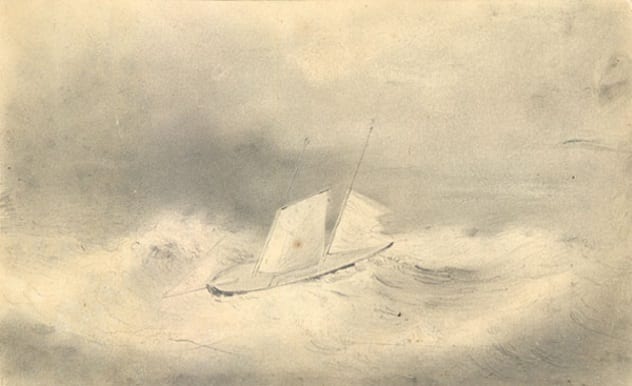
In August 1839, the US Navy purchased a former New York pilot boat and renamed it the Sea Gull.[11] Alongside the newly bought Flying Fish, it was to serve as part of the US Exploring Expedition’s mission to chart the Antarctic and Pacific. The plan suffered a severe setback, however, when they reached the southern tip of South America: Cape Horn. Faced with strong winds, choppy water, and snow, the expedition waited there for months before moving on in April 1840. The Flying Fish and Sea Gull were left behind to wait for the supply ship. Once they had the supplies, they would catch up to the rest of the fleet.
But the winds were still dangerously high. On the night of April 28, the winds were particularly dangerous, and the Flying Fish and her crew made their way back to port, where they waited out the storm that followed. They last saw the Sea Gull at midnight, but it never followed them back to port. It was never seen again. The USS Sea Gull remains on the US Naval Institute’s list of “Missing and Presumed Lost” vessels to this day.
Read about more mysterious disappearances from history on 10 Historical Figures Who Disappeared And Have Never Been Found and 10 Unsettling Cases Of Famous People Who Disappeared.
